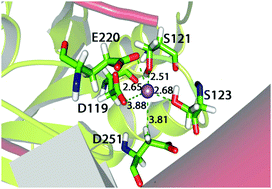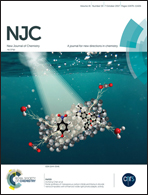Abstract
The importance of integrins in several cell types that affect tumour progression has made them an appealing target for cancer therapy. In particular, the integrin αVβ3 plays an important role in angiogenesis and tumor cell metastasis, besides being evaluated as a target for new therapeutic approaches. By employing quantum chemistry methods based on Density Functional Theory (DFT) within the Molecular Fractionation with Conjugate Caps (MFCC) approach, we investigated the binding energy features of cilengitide interacting with the integrin αVβ3 using a CPCM (Conductor-like Polarizable Continuum Model) scheme to represent the electrostatic environment through a dielectric constant. We have taken into account all ligand–residue interactions within a radius of 10 Å from the ligand, showing the most important regions of the ligand and the residues affecting the binding mechanism. Our computational results give a better understanding of the cilengitide–integrin binding mechanisms, while also being an efficient alternative towards the development of RGD (R, arginine; G, glycine; D, aspartic acid)-based drugs, prodrugs, nanoparticles and carriers, leading to new bio-engineering devices for cancer therapy.



 Please wait while we load your content...
Please wait while we load your content...